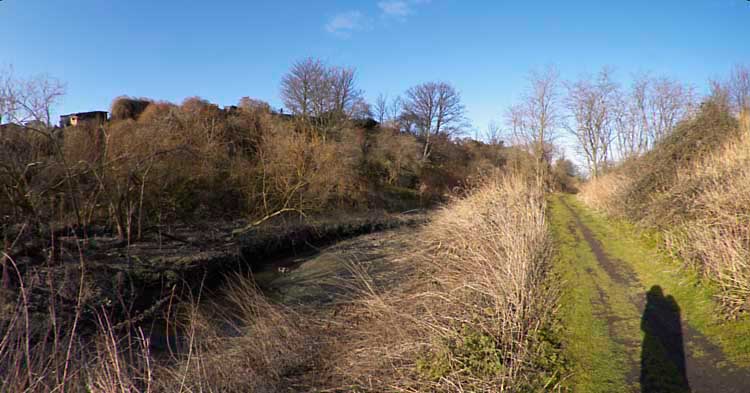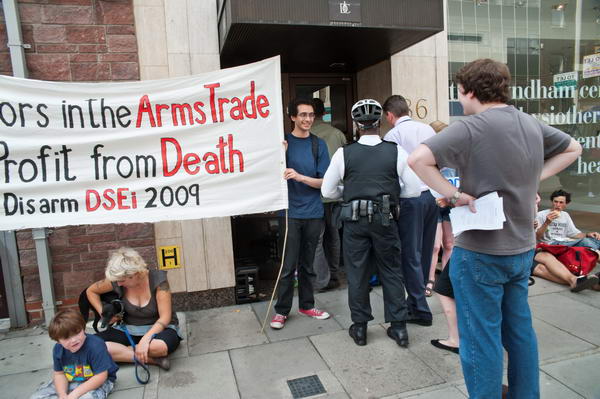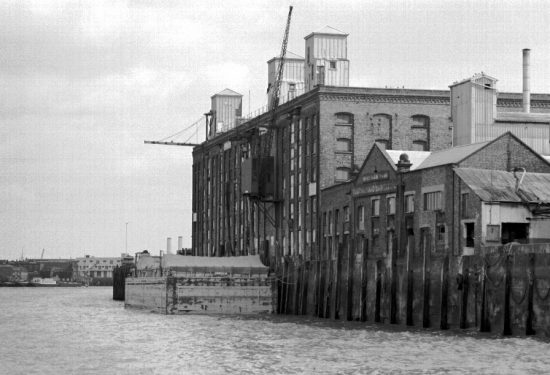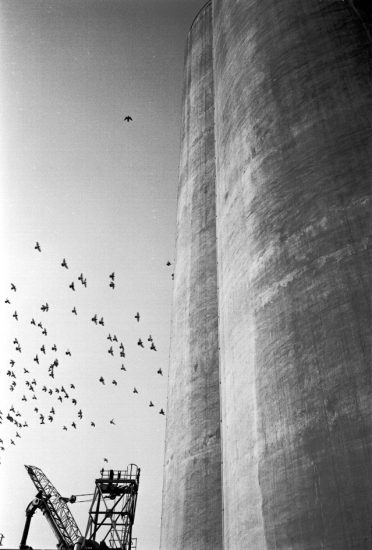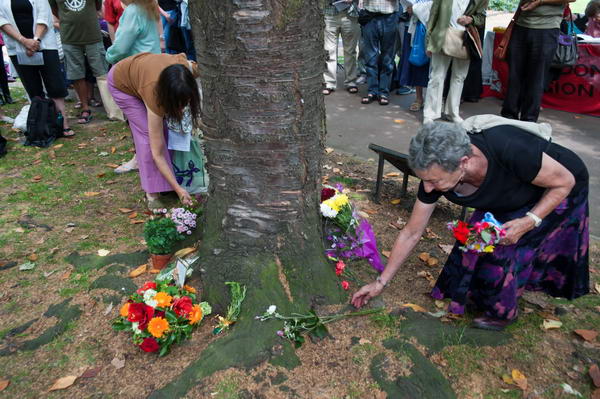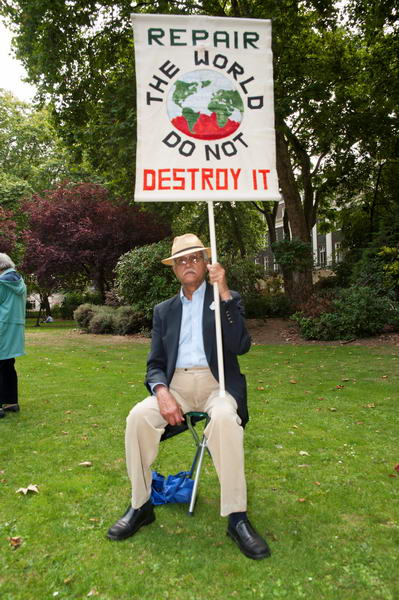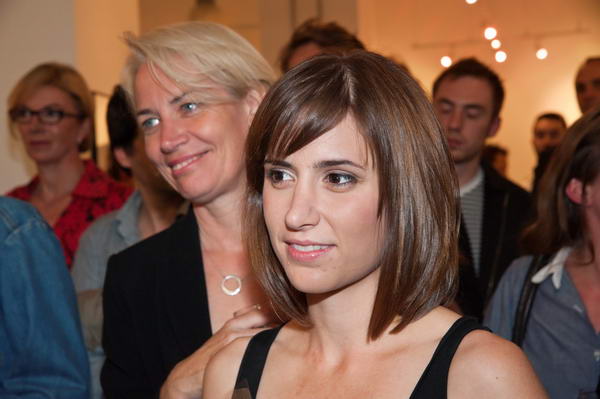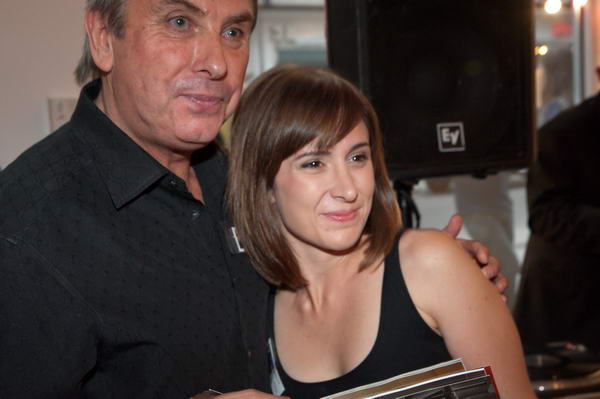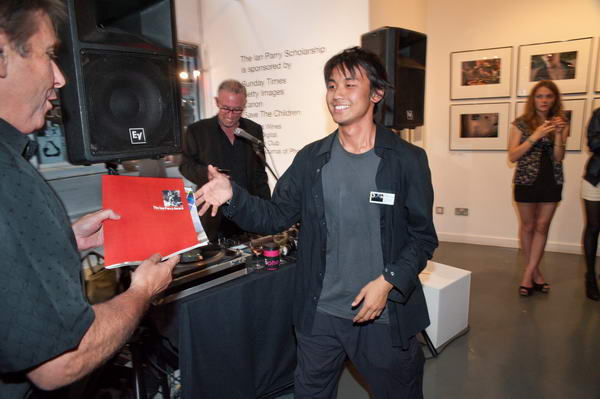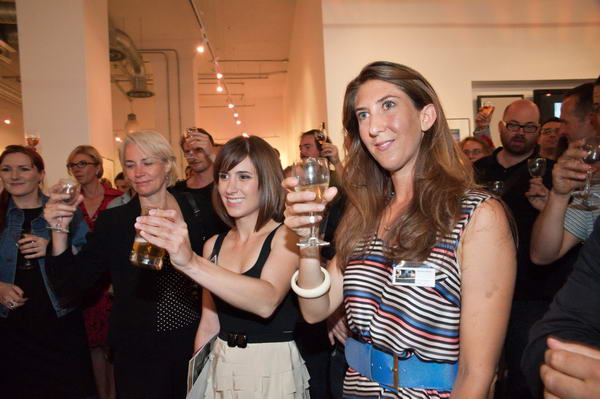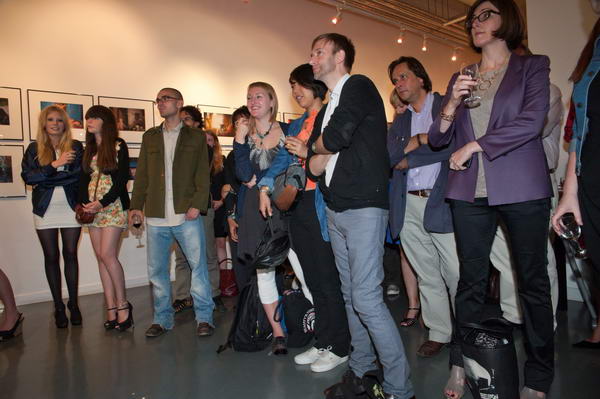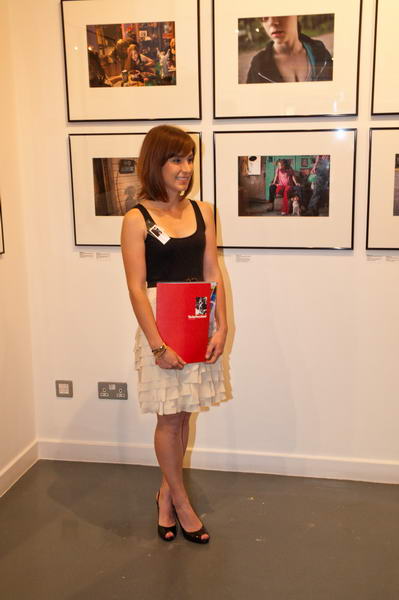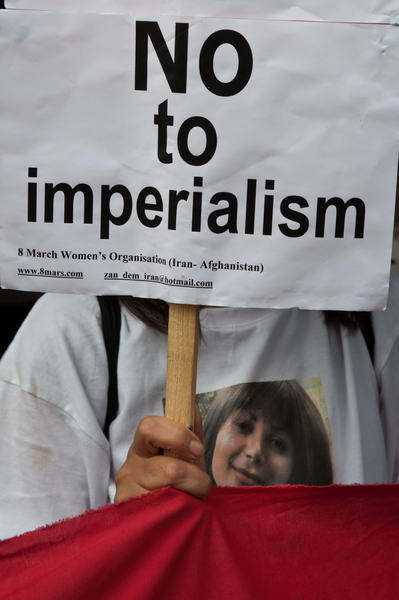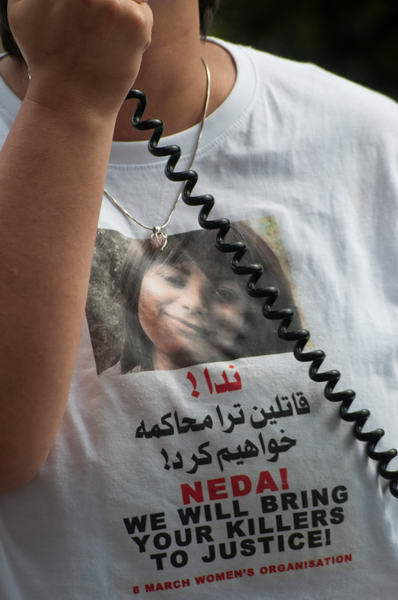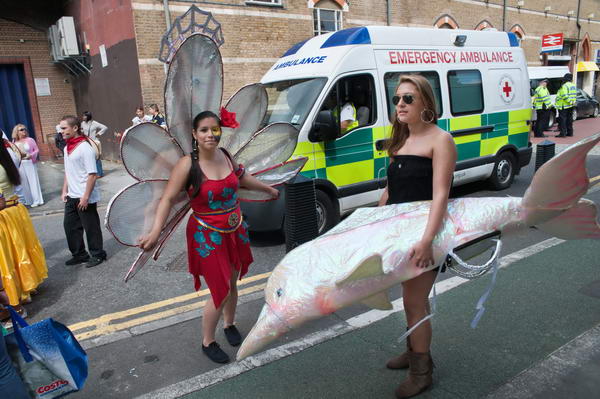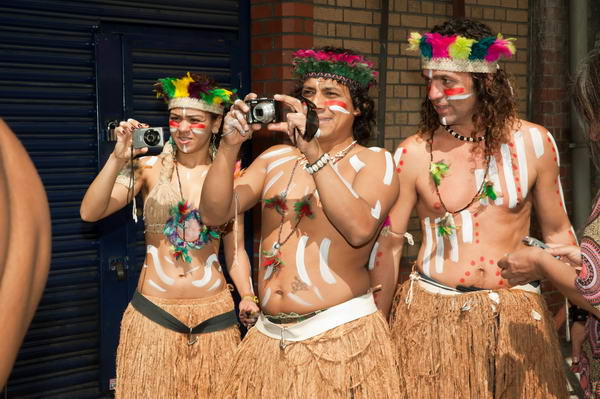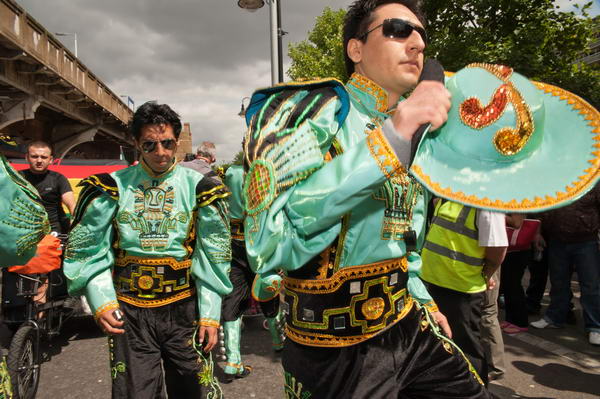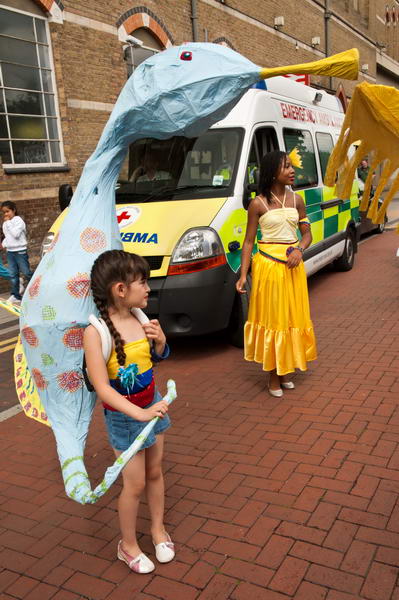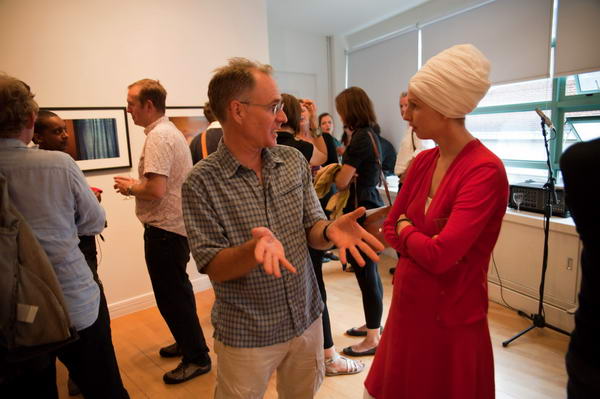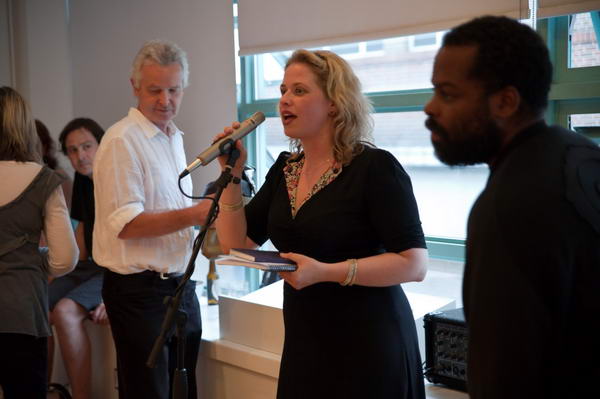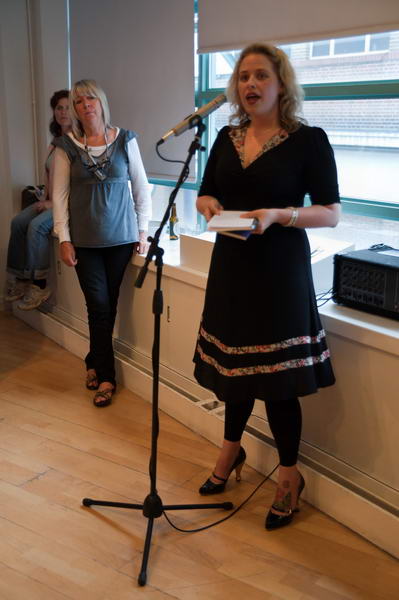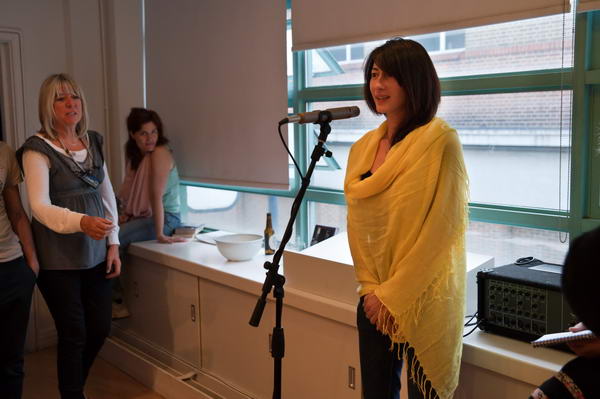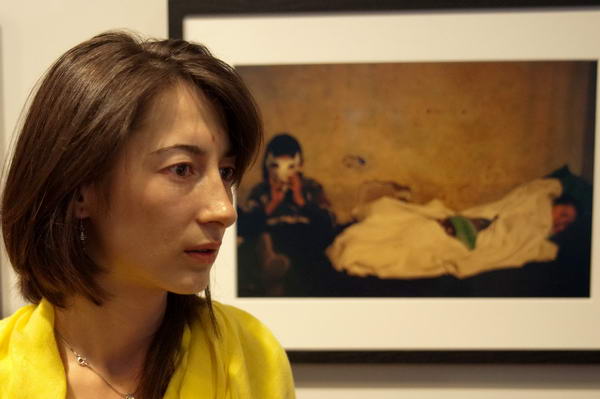That is often the question for photographers. And last Thursday evening I wasn’t sure whether to shoot with flash or without. But in the end I turned on the SB800, set it to my usual-2/3 stop and got on with it.
It was pretty dim light, but the D700 can cope with that, giving fine results even at ISO 3200 if you get the exposure right. It was also raining, and and that can certainly be a problem with flash in several ways. More equipment to keep wiping dry, but you can get also odd effects from the flash illuminating rain drops. There were half a dozen other photographers taking pictures and none were using flash – I seemed to be the odd one out. It didn’t worry me – I’m rather used to that, but I was a little surprised.
I’ve just checked up on the EXIF data in the files – always a better bet than my memory – and find I was shooting at ISO 1250 most of the time. The pictures with flash were at 1/60 f8, while a few without were at 1/160 f4.5, which are more or less equivalent apertures. Both were made with a -1 stop exposure adjustment as otherwise the sky was excessively burnt out when it was in frame.
I was using iTTL balanced fill-flash which automatically adjusts the flash to give a balance with the ambient lighting. The 1/60 speed with flash appears to be a result of using P mode and setting the custom setting e2 for the slowest flash sync speed to the default value (1/60.) With flash, I like the effect of a little shake on the ambient part of the exposure – which at 1/60 you certainly get if the subject makes a gesture.
For the non-flash exposures I’d chosen a minimum shutter speed of 1/160 as I was working with a 24-70mm lens, and although I could work at 1/125 or even 1/60, the faster speed more or less eliminates the chance of camera shake. With the high ISO and a fast f2.8 lens there is seldom a need to use slow shutter speeds in any case. The lens, a fairly new Sigma HSM f2.8 24-70mm, is sharp enough wide open for most purposes, but stopping down to around f4 does sharpen it a little. You only need to stop down further if you need the depth of field.
Of course I didn’t spend a long time working things out, just took a test frame with and without flash and then decided I’d use flash. Later, while I was photographing Michael Meacher MP more or less head on, his glasses were giving some annoying reflections, so I turned the flash off for a few frames.
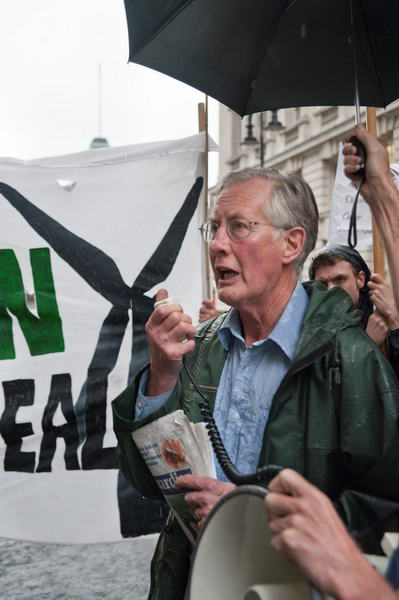
Michael Meacher MP calls for action to save Vestas jobs – No flash
But then I moved around to one side and took a frame without flash before remembering to turn it back on. The result isn’t bad – though it took quite a lot of work in Lightroom to get it like this.
Below is an picture taken using the flash, which was rather easier to sort out in Lightroom, although I’ve perhaps dramatised it a little too much.
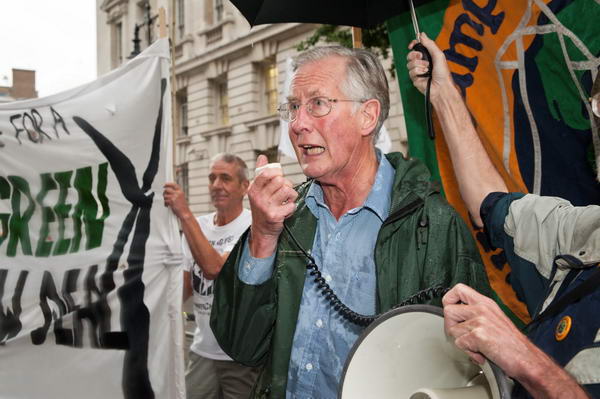
Michael Meacher MP calls for action to save Vestas jobs – With flash
As well as added flash, this image also has added water, a drop on the very large filter on the front of this lens which gives a slight smearing to the letters on the banner. You can also see the greater depth of field in the foreground hand – Phil Thornhill of the Campaign Against Climate Change holding the megaphone – both were taken with focal length of 40mm. It’s perhaps a matter of taste which is better, though I prefer the flash version.
Of course what is important is what Meacher and the other speakers were talking about – supporting the Vestas workers in their fight for jobs. You can see more pictures – almost all taken using flash – and read more about the event on My London Diary.


